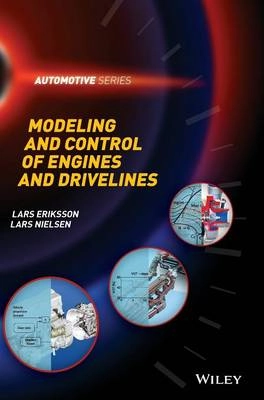Control systems have come to play an important role in the performance of modern vehicles with regards to meeting goals on low emissions and low fuel consumption. To achieve these goals, modeling, simulation, and analysis have become standard tools for the development of control systems in the automotive industry.
Modeling and Control of Engines and Drivelines provides an up-to-date treatment of the topic from a clear perspective of systems engineering and control systems, which are at the core of vehicle design.
This book has three main goals. The first is to provide a thorough understanding of component models as building blocks. It has therefore been important to provide measurements from real processes, to explain the underlying physics, to describe the modeling considerations, and to validate the resulting models experimentally. Second, the authors show how the models are used in the current design of control and diagnosis systems. These system designs are never used in isolation, so the third goal is to provide a complete setting for system integration and evaluation, including complete vehicle models together with actual requirements and driving cycle analysis.
Key features:
Covers signals, systems, and control in modern vehicles Covers the basic dynamics of internal combustion engines and drivelines Provides a set of standard models and includes examples and case studies Covers turbo- and super-charging, and automotive dependability and diagnosis Accompanied by a web site hosting example models and problems and solutions Modeling and Control of Engines and Drivelines is a comprehensive reference for graduate students and the authors’ close collaboration with the automotive industry ensures that the knowledge and skills that practicing engineers need when analysing and developing new powertrain systems are also covered.
Åtkomstkoder och digitalt tilläggsmaterial garanteras inte med begagnade böcker





















